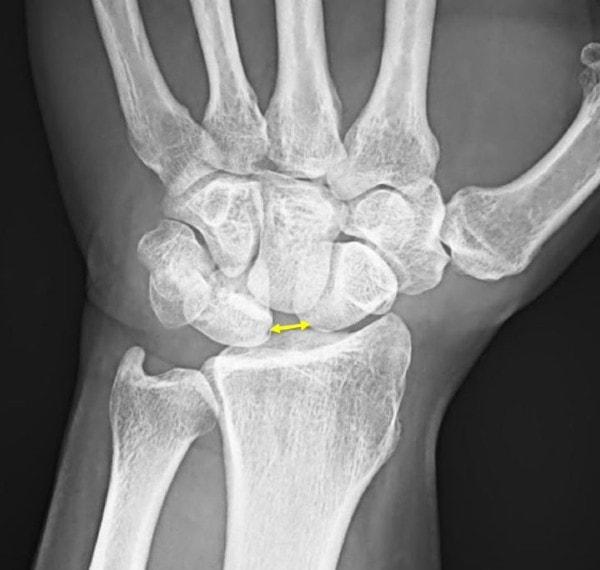Published on
Differential Diagnosis
- Dorsal intercalated segmental instability
- Scapholunate advanced collapse
- Scapholunate dissociation
- Volar intercalated segmental instability

Diagnosis
This patient was diagnosed with scapholunate dissociation (disruption of the ligament between the scaphoid and lunate carpel bones), denoted by a widening of the scapholunate interval. The patient also has rotation of the lunate and scaphoid.
Learnings/What to Look for
- In adults, a scapholunate gap of >3 mm with clenched fist view (Terry Thomas sign) on AP radiographs is considered diagnostic of scapholunate dissociation
- In children, the scapholunate interval is normally wider due to unossified portions of each of the carpal bones. Females have a shorter distance due to earlier skeletal maturity and reach adult values at ~11 years, whereas males reach adult values at ~12 years
- The most common mechanism of injury is a fall on outstretched hand (FOOSH)
Pearls for Initial Management
- Acute, nondisplaced and chronic asymptomatic scapholunate interosseous ligament injuries may be treated conservatively with nonsteroidal anti-inflammatories and immobilization
- Surgical repair or reconstruction of the scapholunate interosseous ligament may be required to prevent long-term complications (eg, proximal migration of the capitate between the scaphoid and lunate, possibly resulting in scapholunate advanced collapse)
Acknowledgment: Image and case presented by Experity Teleradiology (www.experityhealth.com/teleradiology).
A 27-Year-Old Male with Pain After a Fall
1 2
